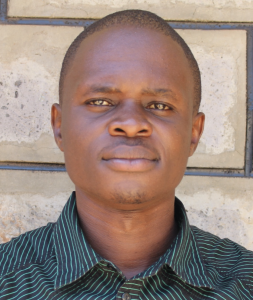Kamimei Secondary School is based in a rural area that's filled with grass-thatched houses. The majority of the 838 students and 30 teachers live in the surrounding village. Since Kamimei is in the highlands, it is known for tea production. Parents also raise dairy cattle to make an income.
The secondary school opened in 2010 under the leadership of the adjacent primary school. It finally received its own principal in 2012.
The day begins early in the morning at 6 am. Students carry their homework and a container of water to school each morning. On arrival at school, the students undergo morning lessons from 7 am. Pupils break for lunch at 12:45 pm and resume afternoon lessons at 2 pm. The school provides lunch for all students. Lessons end at 3:10 pm when pupils break for games and other extracurricular activities. They normally leave for home at 5 pm.
Though the school appears to be quite developed, they are still lagging behind in the area of water. When the school first opened its gates to students, there was no water available at all. The school management purchased a plastic tank and a gutter to collect rainwater. However, this tank can only hold 5,000 liters of water.
The water from the tank is strictly rationed but is still not enough to serve the entire student body. This being the case, students must carry as much water as they can to school each morning. Some have a long walk from home and tire greatly from carrying such a heavy water container. And despite this effort, the school still runs out of water during the day. We witnessed at least two students arriving with large buckets of water during our visit that day - a process that interrupts valuable class time.
The water delivered by students must be left out so that dirt can settle before it is consumed.
Water scarcity has also forced the school to sacrifice cleanliness.
"As they say, water is life. The unavailability of clean, safe water in our school has indeed made it difficult - especially during the drought season (when there's no water in the tank) - for us to maintain the cleanliness of our institution. Cleaning the classrooms and the sanitation facilities have been a challenge considering that students need a good environment for them to study," said Principal Kavuludi.
What we can do:
Training
Training on good hygiene habits will be held for two days. The facilitator will use PHAST (participatory hygiene and sanitation transformation), ABCD (asset-based community development), CTC (child to child), lectures, group discussions, and handouts to teach health topics and ways to promote good practices within the school. The CTC method will prepare students to lead other students into healthy habits, as well as kickstart a CTC club for the school.
Handwashing Stations
There is currently nowhere for students to wash hands after using the latrines or before eating lunch.
This CTC club will oversee the new facilities, such as handwashing stations, and make sure they are kept clean and in working condition. The two handwashing stations will be delivered to the school, and the club will fill them with water on a daily basis and make sure there is always a cleaning agent such as soap or ash.
VIP Latrines
"As an institution, we have tried to improve on the sanitation and hygiene standards. Our toilets are well kept only that they are not sufficient for the entire population. We tried putting up some toilets but they collapsed during the heavy rains," said Deputy Headteacher Karakacha.
Two triple-door latrines will be constructed with local materials that the school will help gather. Three doors will serve the girls while the other three serve the boys. And with a new source of water on school grounds, students and staff should have enough to keep these new latrines clean.
Rainwater Catchment Tank
A 50,000-liter rainwater catchment tank will help alleviate the water crisis at this school. The school will also help gather the needed materials such as sand, rocks, and water from the spring for mixing cement. Once finished, this tank can begin catching rainfall that will be used by the school’s students and staff.
We and the school strongly believe that with this assistance, standards will significantly improve. These higher standards will translate to better academic performance!

 Rainwater Catchment
Rainwater Catchment
 Rehabilitation Project
Rehabilitation Project



































